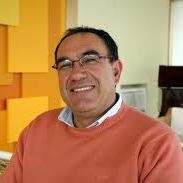Pimentel, R., Lopes, D.H., Cabrera, R. & Dantas, L. (Eds.) (2016) A mosca-do-mediterrâneo nas ilhas Terceira e de S. Jorge. Grupo da Biodiversidade dos Açores, Universidade dos Açores. Angra do Heroísmo. 92 pp.
The Mediterranean fruit fly, the Medfly, is one of the most destructive insect species attacking fruit crops. It spread from central Africa north into the Mediterranean through the trade routes connecting Africa and Europe in the 19th century. The trade that spread the Medfly regularly passed through the Atlantic islands, with Medfly becoming established from the Azores in the north to St Helena in the south. Fruit growers have tried to control the Medfly, and other recent fruit fly invaders from Africa, for decades. This is a major challenge to the smallscale fruit growers across the Macaronesian islands who have limited resources to protect small orchard parcels from reservoirs of fruit flies living on wild hosts in moderate climates that are well-suited to fruit fly development at low altitudes. The CABMEDMAC project funded by the European Commission Interreg programme is one of a series of Interreg projects that have variously addressed fruit pests in the Azores, Madeira, the Canaries and Cape Verde. This volume represents the coordinated efforts led by entomologists from these islands to discover and document the life histories, distributions and control opportunities of the Medfly and Oriental Fruit Fly in the region. Because these fruit flies are serious pests they have been the subject of extensive research and control effort from Asia to the Americas and this knowledge has been an important starting point for the work in Macaronesia. However, those familiar with these groups of islands know well that the conditions, climatic, ecological and socio-economical, are very different from the mainland horticultural systems. The investigation of the main fruit fly pests in the islands has therefore been an important process to adapt the knowledge of the continents to the local realities. The chapters in this volume give a detailed account of the hosts and phenology of the fruit flies across the various islands, and the subregions and micro-habitats within the larger islands. Over the years of the Interreg projects grids of fruit fly traps have been established to monitor the seasonal progression and abundance of the insects and predictive models have been created as a basis for control advice and damage estimation. Both Medlfy and Oriental fruit fly are attracted by chemical lures and these can be adapted to both monitoring and control. The efficiency of various insecticides used in conjunction with baits and traps has been tested to provide control recommendations for growers. Novel methods, such as bioactive plant extracts from locally available plants, have also been tested. Locally scaled trials of sterile insect technique have been tried on some islands. Grower cooperatives and individual fruit growers in the islands have joined in the research to support their industry and their environment and actively participate in the uptake of the results. Because of the small scale of production units and the large reservoirs of wild hosts it is inevitable that fruit fly control in the islands will require area-wide management, with many growers working together to put effective controls into practice. This research has established a solid core of ecological understanding of the fruit fly problems in the islands and built an effective network of international cooperation among the entomologists, ecologists and agronomists of the region. This network is a foundation for the future that will bring further benefits in pest management, environmental quality and better returns for the horticulture industry.


